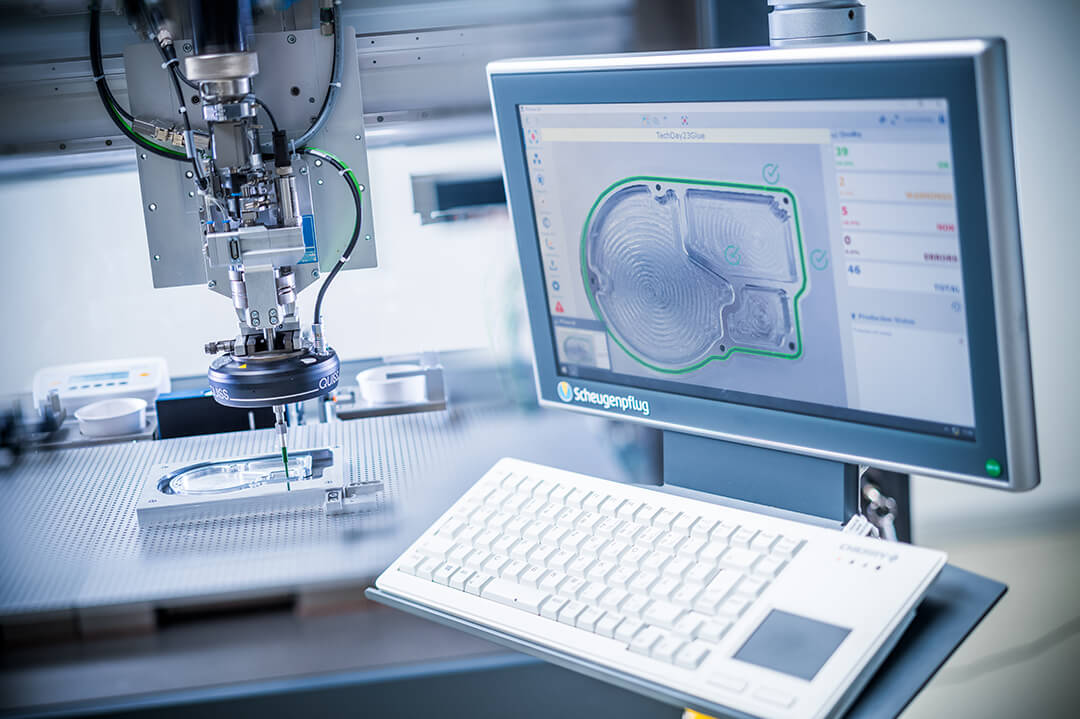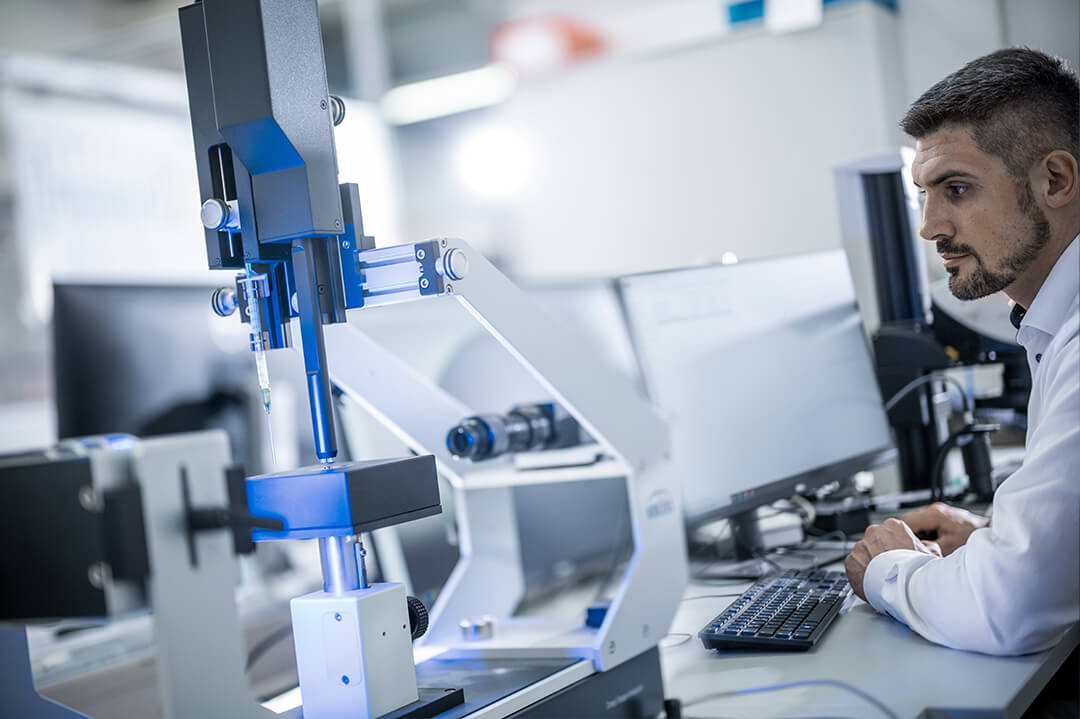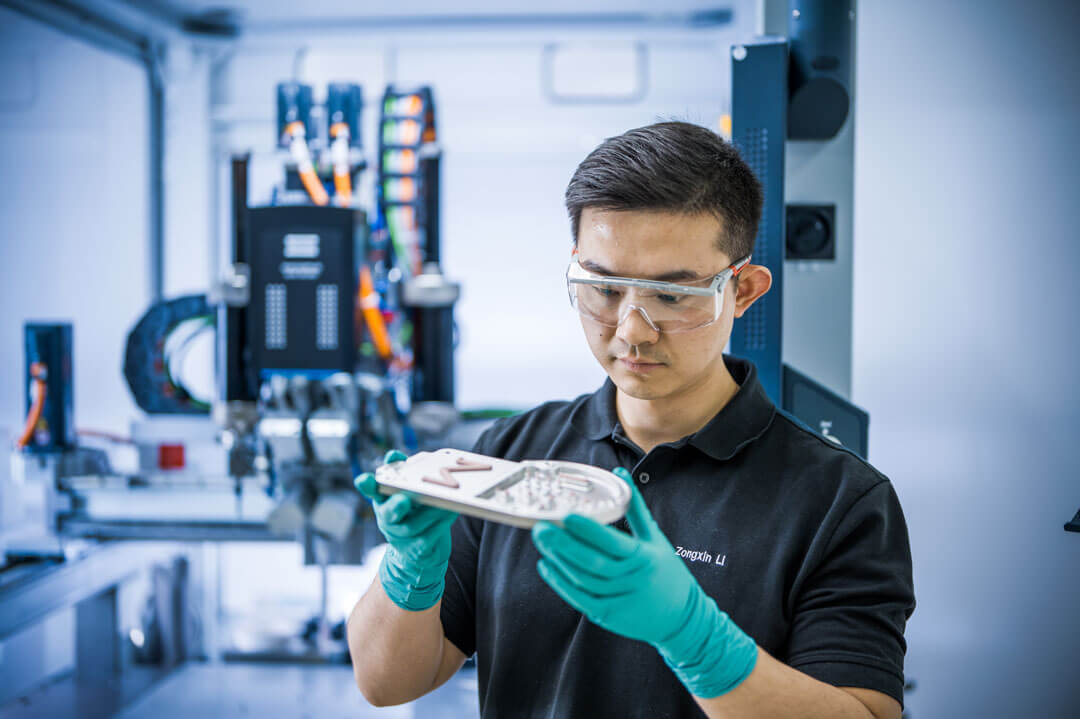Experience is (almost) everything! And that also goes for dispensing.
The component is ready, the production processes are fully coordinated, production gets under way – but the results are disappointing. The problem is the dispensing process.
Perhaps there are gaps in the dispensing bead, or the wrong amount has been applied, or there are discrepancies in the contour, or bubbles in the material. So what’s the reason? Well, in order to develop a dispensing process that is perfectly suited to a particular project, it’s not enough simply to provide a dispensing system with the right parameters. Experience and know-how are indispensable here.
Efficient, tailored bonding and potting processes are crucial for the long-term reliability of electronic components. Even the smallest deviations or inhomogeneities during dispensing and potting can significantly impair the quality and service life of the components.
And who wants to take such a risk with a car battery? Or with an air taxi? Or with sensors for autonomous driving? Or, heaven forbid, with a pacemaker? Component failures here not only mean high costs, they damage reputations and, worst of all, they can endanger lives.









